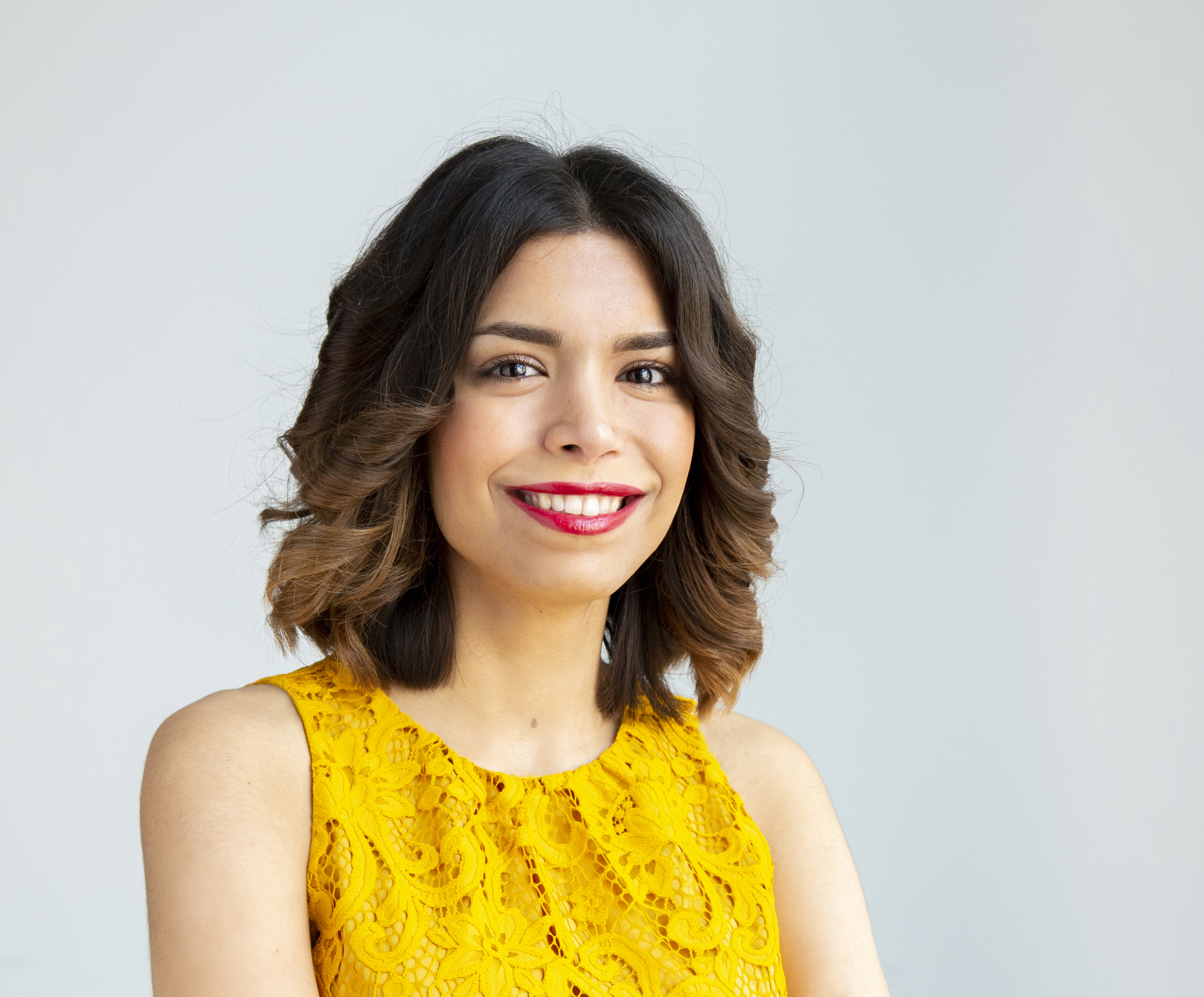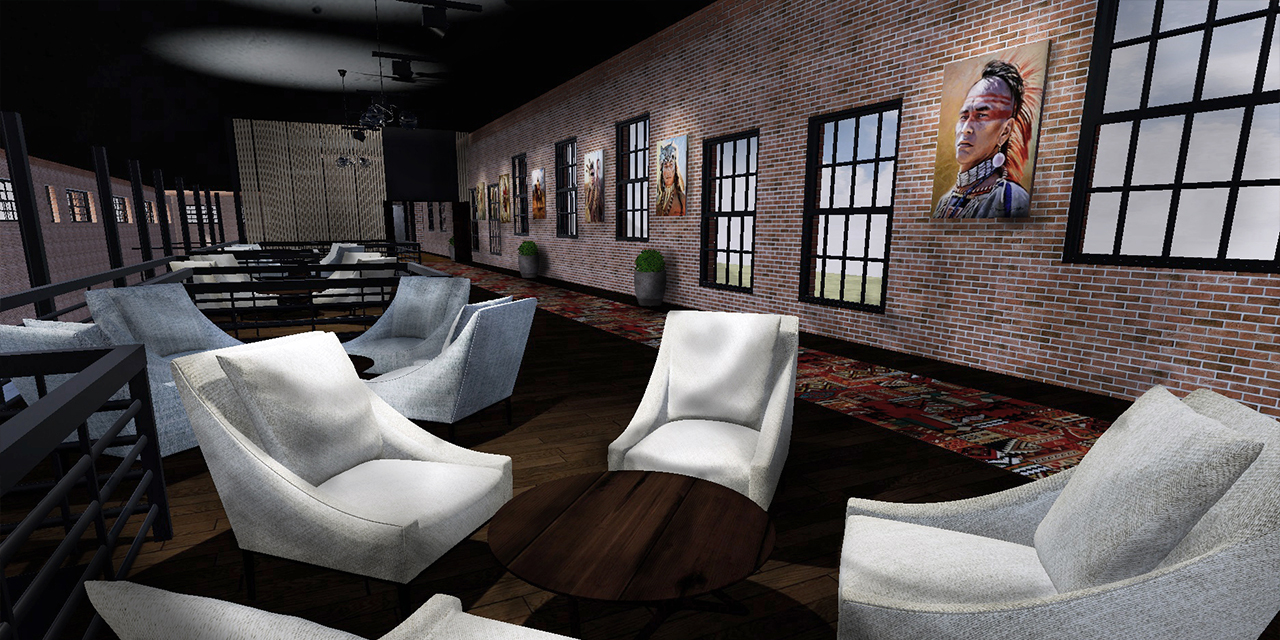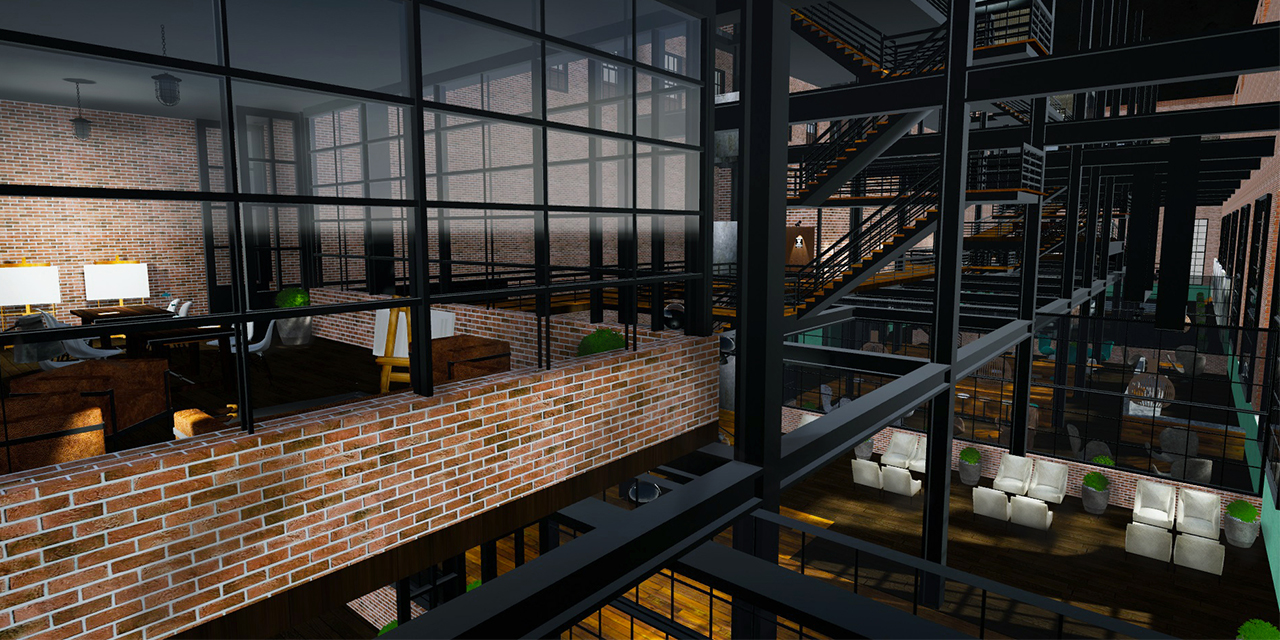
Master of Design graduate Reyhaneh Alizadeh. (Photo: Supplied)
One day in July, forty-two Edmontonians came together to explore one of the city's most iconic structures. It was an unusual event, given that the building - the Rossdale power plant - has been closed to the public since 2012.
But thanks to the talents of a UAlberta Master of Design student, community members could explore it from the comfort of the U of A's Industrial Design Studio, visualizing a world of design possibilities through a pair of virtual reality goggles.
"They entered an immersive environment where they could look at and move through new concepts for the building - things like an art gallery, a museum and a café," says Reyhaneh Alizadeh, who pursued the project as part of her recently-completed master's degree.
"People were fascinated. They would go into a special event venue in the restaurant and say, 'Oh my God - I would rent this place for my wedding.' And some would say, 'I love the gallery. I would love to show my work here.'"
The meeting, which generated a host of ideas for city planners, was the culmination of a project supporting the City of Edmonton's River Crossing redevelopment initiative. It may soon offer local residents a chance to experience the real Rossdale building in entirely new ways.
A virtual rendering of the interior of the Rossdale Power Plant boiler hall. (Images from Unreal Engine 4.20.3, supplied by Reyhaneh Alizadeh)
Redeveloping the Rossdale
The power plant is a special structure located on a very special site. As Lewis Cardinal and the Indigenous People's Arts and Culture Coalition have noted, "Edmonton was born at Rossdale Flats as a gathering place for Indigenous peoples 8,000 to 10,000 years before Europeans came." The site remains extremely important to Alberta's Indigenous communities.
Much of the building itself was designed and built between the 1930s and the 1950s. A "sophisticated structure and iconic element in our city's skyline," in the words of the Rossdale ReGeneration group, it is fondly remembered by most Edmontonians.
"Planners with the City's River Crossing project want this place to be active again," says Alizadeh. And so her graduate supervisor Tim Antoniuk, a member of the Edmonton Design Council, proposed that she bring community members together to generate new ideas using VR technology.
Alizadeh got right to work. Collaborating with the Rossdale Community League, she invited people from different backgrounds and professions to participate in a VR session in which they could explore a wide-open model of the power plant.
This initial meeting "gave participants a chance to see what the space looked and felt like without anything in it," she says. "Then we began speaking about what they wanted from it, about how we might re-imagine it."
She collected all of the proposals, ranging from an art gallery to social space, and ran them by City officials to consider their safety implications. It was also critical to ensure that no permanent changes were made to the building, which is recognized, as Rossdale ReGeneration points out, "as one of Canada's Historic Places."
With approvals in hand, Alizadeh used design software to re-imagine the interior of the plant's vast boiler hall - 100 metres long and 21 metres high - to include some of these spaces. That set the stage for the July meeting, where the original participants and other community members got a chance to experience their vision laid out in fine detail.
"I couldn't complete the design without including all of those visual details," she says. "I used different textures, different structures. And that was really important to some participants. They would say, 'I like the way this restaurant looks. I would enjoy spending time here.'"

A virtual rendering of a community hall in the Rossdale Power Plant. (Images from Unreal Engine 4.20.3, supplied by Reyhaneh Alizadeh)
Looking forward
The feedback from the second session, she says, "may be useful for the City's Rossdale development project if they wish to consult it." She also hopes that local Indigenous communities will play an important role in future deliberations.
For her part, she has just completed a fall internship with the Canadian design firm DIALOG, which hosted its annual internal design workshop on Nov. 7 and 8. "The timing was right," she says, "because the focus of the workshop was on exploring design ideas for the Rossdale plant."
The internship, supported by UAlberta's Graduate Student Internship Program, presented Alizadeh with an exciting chance to get hands-on experience in a design firm. "It aligned with my long-term goal of working in the field of urban design, placemaking, architecture, and interior design."
It also allowed her to keep working on a project that is as stimulating as it is culturally important. "During one of our sessions, a participant said the Rossdale plant is a jewel in the city," she says. "And that's exactly what it is. A jewel."
Reyhaneh Alizadeh Rabiei recently completed her Master of Design degree at UAlberta. Her graduate supervisor, Tim Antoniuk, is associate professor of design studies in the Department of Art & Design, Faculty of Arts.
In addition to acknowledging Prof. Antoniuk's support, she extends sincere thanks to the following: Prof. Robert Lederer; Dr. Pierre Boulanger, who allowed her to use the VR Lab in the Department of Computing Science, Faculty of Science; River Crossing project senior planner Erik Backstrom; River Crossing project planner James Haney; members of the Rossdale Community League; Councillor Scott McKeen; and the DIALOG architecture firm, including Jeff Dibattista, Tai Ziola and Neil Kemp.
(This article was corrected and updated on January 7, 2020.)
